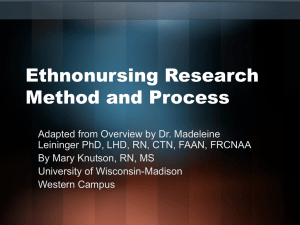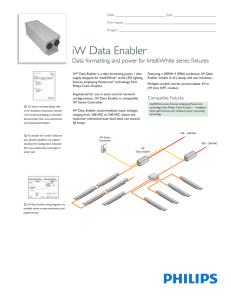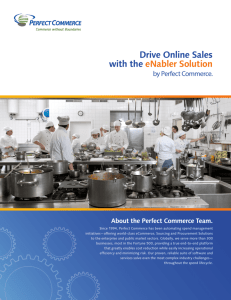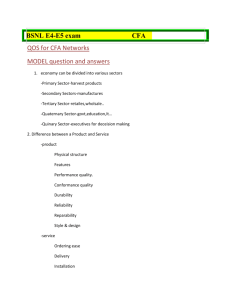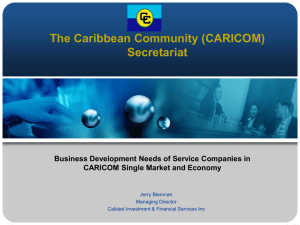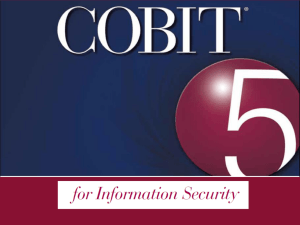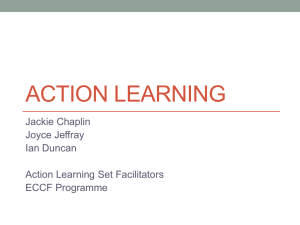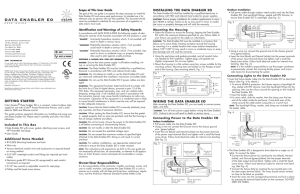LMI Information Management Standard TechAmerica
advertisement
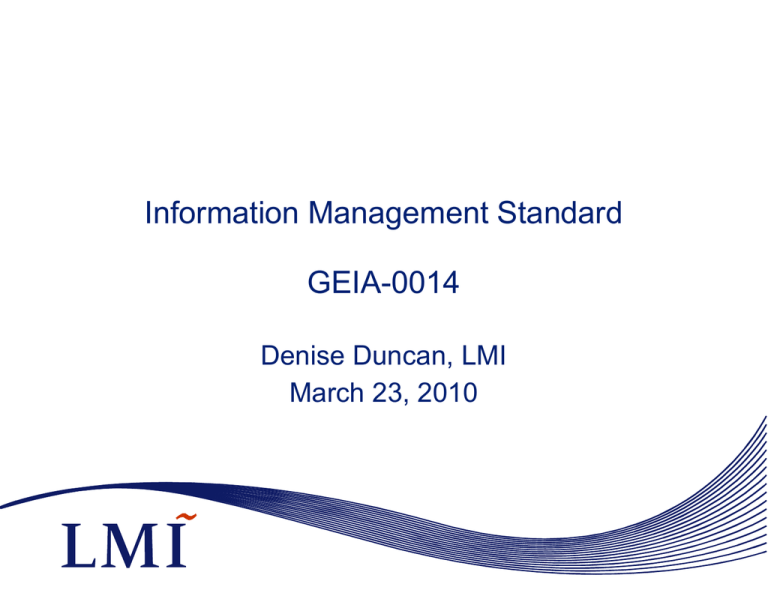
Information Management Standard GEIA-0014 Denise Duncan, LMI March 23, 2010 Information Management Standard • • • • Background Work to data Schedule Your participation 2 IM Standard Background • In development by TechAmerica’s Enterprise Information Management and Interoperability committee – Origins in the group that developed ANSI-GEIA 859, Data Management Standard • Need for guidance -- IM is defined differently because of different perspectives – – – – – Enterprise Architecture Data Administration Content Management Public Affairs/Corporate Communications Etc. 3 Developed definitions to scope each activity: • Information: A combination of data and the application of rules which is managed and then recorded, classified, organized, related, or interpreted within a certain context. • Information Management: The exercise of control over the collection, analysis, organization, storage, security, retrieval, and dissemination of the information assets of an enterprise. It includes the definition, value, and utility of those information assets 4 Definitions to scope each activity • Information Architecture: The analysis, design, and application of business processes to data assets within information systems, concentrating on entities, their attributes, and their interrelationships. It enables proper information management. • Data Architecture Defines data assets and how they are formatted, organized, moved, used, and stored in an enterprise. It establishes common guidelines for data operations that make it possible to predict, model, measure, and control the flow of data within a system 5 Table of Contents for IM Standard • Introductory material – Purpose, Scope of standard – Definition of terms – Other standards referenced • Principle1 - Manage information as an Enterprise artifact – Enabler 1.1 - Establish that information belongs to the legal entity that invested in its creation – Enabler 1.2 - Assess Value and Future Value to determine RoI of info 6 Table of Contents for IM Standard • Principle 2 - Implement Information Governance appropriate to the value of the information holdings – Enabler 2.1 - Governance should ensure the enterprise’s information is optimal within its legal and regulatory framework – Enabler 2.2 - Establish IM Policies that enable enterprise organizations to develop processes and systems that comply with policy while enabling efficient operations • Sub-Enabler 2.2.1 - Be aware of policy impacts throughout the information lifecycle (perhaps different policies in different phases) – Enabler 2.3 - Enterprise Architecture 7 Table of Contents for IM Standard • Principle 3 - Manage information throughout its Life Cycle – Enabler 3.1 – Information is generated based on valid requirements – Enabler 3.2 – Use of Document and Content Management – Enabler 3.3 – Information processing based on “Only Handle Information Once” (OHIO) 8 Principle 3, continued – Enabler 3.4 – Design information for retrieval and reuse • Sub-Enabler 3.4.1 – Metadata • Sub-Enabler 3.4.2 – Information interoperability • Sub-Enabler 3.4.3 – Semantically meaningful AND Relevant • Sub-Enabler 3.4.4 – Bill Of Information Management • Sub-Enabler 3.4.5 - address Information obsolescence – 3.4.5.1 - Information loss – 3.4.5.2 - information not current 9 Table of Contents for IM Standard • Principle 4 - Identify and Manage Authoritative Information Products – Enabler 4.1 - Ensure that information is of a Quality suitable to its use – Sub-Enabler 4.1.2 - Know the provenance of information products – Sub-Enabler 4.1.3 - Implement QA/QC on key information artifacts – Sub-Enabler 4.1.3.1 – ‘Design in’ error management 10 Table of Contents for IM Standard • Enabler 4.2 - Make Information Products Trustable • Enabler 4.3 - Protect information – Sub-Enabler 4.3.1- Introduction to information protection – Sub-Enabler 4.3.2 - Requirements for protection • Enabler 4.4 - Reconcile System life cycle and Information Life cycle relationship – Sub-Enabler 4.4.1 – Reconciliation at the System/Tool level and in policy and guidance 11 The Writing Team (in no particular order) – – – – – – – – – – Cynthia Hauer Joe Roman Jeannie Sage Denise Duncan Jan Lundy Jim Van Dyke Sue Kilgore Bonnie Johnson Mark Browning Rachel Verdugo 12 We need more help • To write, or to work in partnership with an author, to assist them and keep them ‘on track’ – It’s hard to brainstorm, if you are the only person assigned to an enabler or other section • Contact me, or any one of the authors listed on the previous slide Denise Duncan DDUNCAN@LMI.ORG 703. 917.7378 Cell 703. 973.7921 13



